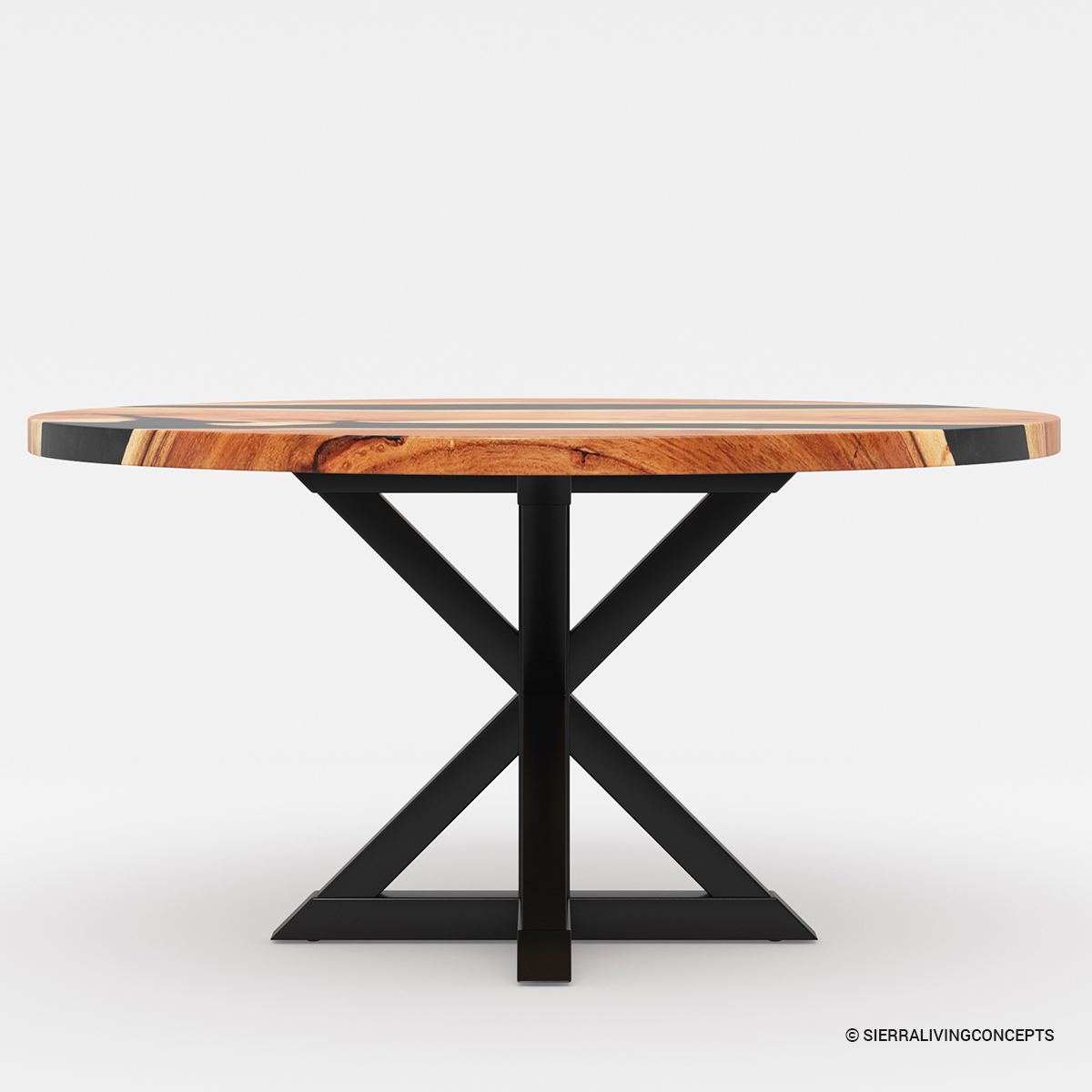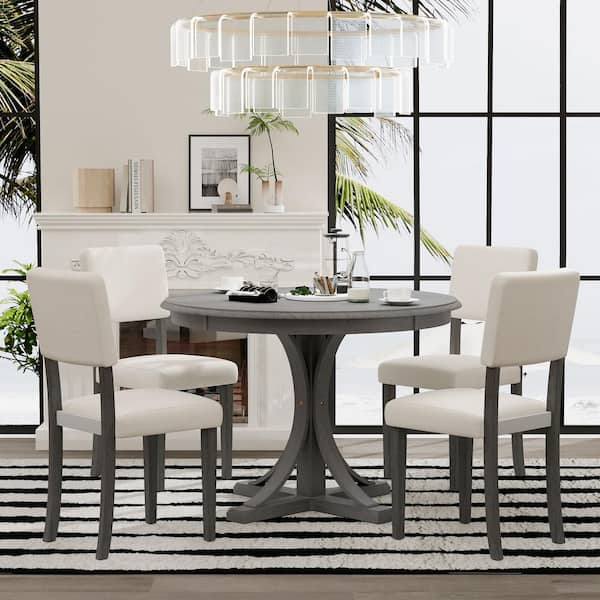Expert Tips for Installing Eating Space Table Legs for Maximum Security
When it involves installing eating room table legs, accomplishing optimum security is critical for both performance and appearances. The procedure begins with choosing the right materials and hardware, followed by thorough alignment and factor to consider of weight distribution. Each action plays a critical duty in making certain that the finished product endures everyday use without jeopardizing safety or design stability. Comprehending the subtleties of these aspects can considerably affect the general end result. What certain methods can boost stability even better?
Pick the Right Legs
When selecting the suitable legs for your dining area table, it is important to consider both capability and looks. The legs you select will dramatically impact the general layout and security of the table. First, assess the table's planned use; if you expect frequent events, stronger legs, such as those made from solid wood or metal, might be more ideal, as they use increased sturdiness and support.
Next, think about the elevation and design of the legs in regard to the tabletop. Conventional eating tables generally range from 28 to 30 inches in height, so make certain the legs straighten with this standard for convenience. The design of the legs must enhance the layout of the table top-- whether it be modern-day, rustic, or typical. As an example, conical legs can add a modern touch, while transformed legs could communicate an extra timeless aesthetic.

Select Appropriate Hardware
Exactly how can the appropriate hardware enhance the stability and long life of your dining room table? The option of appropriate hardware is essential to guaranteeing that the legs of your table are securely connected and able to withstand routine usage. Premium screws, screws, and brackets supply the essential stamina to sustain the weight of the table, along with any added loads placed upon it throughout meals or gatherings.
When choosing screws, choose those made from resilient materials such as stainless steel or brass, which withstand rust and keep stability over time. The size of the screws is equally essential; they ought to pass through deeply into the table's structure without jeopardizing stability. For bolted connections, consider making use of lock washers to avoid loosening up due to resonance or motion.
Furthermore, making use of edge brackets can include additional assistance, particularly for bigger tables or those with much heavier tops. These braces distribute weight equally and help keep the table's form. Guaranteeing that the hardware you choose is suitable for the particular products of your table will better enhance its total stability and longevity, allowing you to appreciate your dining experience for years ahead.
Ensure Appropriate Alignment
Correct alignment of dining-room table legs is vital for both visual appeal and practical security. Misaligned legs can result in an irregular table top, which may not only be visually uninviting but additionally endanger the table's use. To accomplish ideal placement, start by gauging the distance from the table's corners to the leg attachment points. This makes certain that each leg is located equidistant from the sides, developing a balanced appearance.
Utilize a degree throughout installation to confirm that each leg is perpendicular to the tabletop. It is a good idea to note the wanted leg settings on the underside of the table with a pencil or concealing tape before safeguarding them.
In addition, double-check the placement after the preliminary screws are tightened, as adjustments may be essential prior to fully securing the equipment. By focusing on proper alignment, you not just enhance the table's redirected here general design however likewise make sure that it stays useful and stable for many years to come.

Consider Weight Circulation
After making sure appropriate placement of the dining-room table click here to read legs, it is necessary to consider weight circulation to boost stability and functionality. dining room table legs. Appropriate weight distribution is critical in protecting against wobbling and guaranteeing that the table can sustain its desired load without danger of tipping or falling down
When placing the legs, guarantee they are put at equivalent ranges from the center of the table to equally distribute the weight throughout the structure. Consider the weight of the tabletop and any type of items that will frequently relax on it, such as ornamental items or tabletop devices. Tables with much heavier surfaces should preferably have legs positioned closer to the corners, as this maximizes the base of assistance and lessens the risk of instability.
In addition, if the table is meant for use in a high-traffic area, consider making use of larger materials for the legs or including supporting aspects, such as cross-bracing or a reduced shelf - dining room table legs. These adjustments can help preserve equilibrium and protect against changing throughout use. Inevitably, a well-considered weight circulation approach will dramatically enhance the table's total efficiency, ensuring it remains a functional and attractive centerpiece for your dining space
Test Stability Before Usage
Testing the security of Full Article the dining room table before usage is a crucial step that ought to not be ignored. Guaranteeing that the table is safe and stable can stop accidents and prolong the life-span of the furnishings. Begin by applying gentle stress to different factors on the table surface area. Lower on the center and after that along the edges, observing any wobbling or changing. If the table reveals instability, recognize the legs or joints that may need adjustment.
Following, examine that all bolts and screws are tightened up effectively. Loose connections can bring about instability and prospective damage with time. If necessary, use wood adhesive on joints to boost stability, guaranteeing to permit adequate drying out time.

Verdict
Finally, the setup of dining-room table legs calls for cautious factor to consider of materials, hardware, weight, and placement circulation to achieve maximum security. By choosing sturdy legs and premium bolts, ensuring precise placement, and dispersing weight equally, the architectural stability of the table can be significantly enhanced. Conducting a stability test prior to routine usage even more makes certain that the table will endure daily pressures, thus supplying a dependable and risk-free eating experience.
When it comes to mounting eating area table legs, achieving maximum stability is critical for both capability and looks. The legs you choose will substantially influence the overall design and security of the table (dining room table legs). Conventional dining tables normally vary from 28 to 30 inches in height, so make sure the legs straighten with this requirement for convenience.Appropriate placement of dining room table legs is important for both visual appeal and useful security.In final thought, the setup of eating room table legs requires cautious consideration of materials, placement, hardware, and weight distribution to achieve maximum security